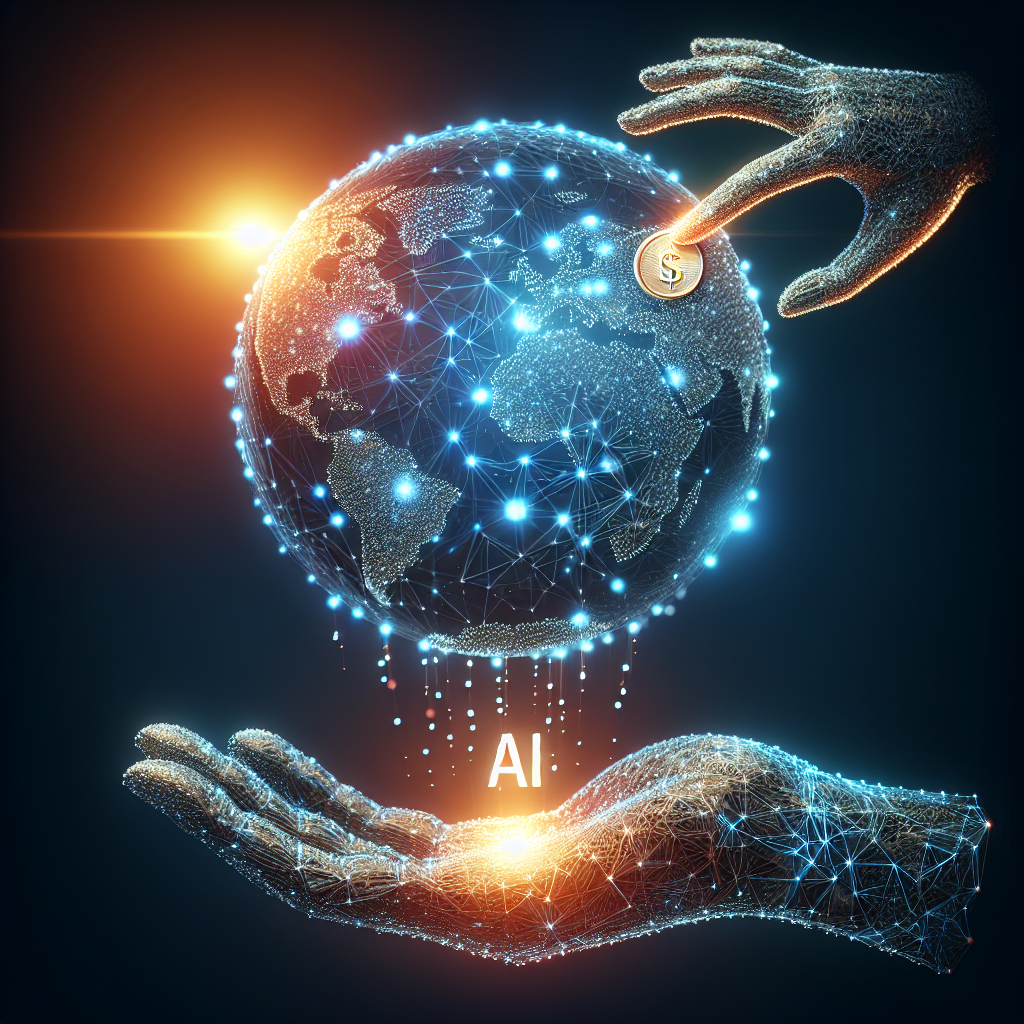Harnessing the Power of AI for Global Impact: The Future of Philanthropy
In recent years, artificial intelligence (AI) has become a powerful tool for driving innovation and making a positive impact on society. From healthcare to education, AI has the potential to revolutionize the way we address some of the world’s most pressing challenges. In the realm of philanthropy, AI is also playing a significant role in helping organizations and individuals maximize their impact and reach a broader audience. In this article, we will explore how AI is changing the landscape of philanthropy and discuss the potential benefits and challenges of harnessing AI for global impact.
AI in Philanthropy: A Game-Changer
AI has the potential to transform philanthropy in several ways. One of the most significant benefits of AI is its ability to analyze vast amounts of data quickly and accurately. This allows philanthropic organizations to identify trends and patterns in data that would otherwise be impossible to detect. By leveraging AI-powered analytics, organizations can make more informed decisions about where to allocate their resources and how to maximize their impact.
AI can also help philanthropic organizations streamline their operations and improve their efficiency. For example, AI-powered chatbots can provide instant support to donors and volunteers, freeing up staff members to focus on more strategic tasks. AI can also help organizations automate repetitive tasks, such as data entry and reporting, allowing them to devote more time and resources to their core mission.
Furthermore, AI can help philanthropic organizations reach a broader audience and engage with donors in new and innovative ways. For example, AI-powered algorithms can analyze donor behavior and preferences to personalize fundraising campaigns and suggest tailored giving opportunities. This can help organizations attract new donors and retain existing ones, ultimately increasing their impact and reach.
Challenges and Considerations
While the potential benefits of AI in philanthropy are vast, there are also several challenges and considerations that organizations must keep in mind when harnessing AI for global impact. One of the main challenges is the ethical implications of using AI in philanthropy. For example, organizations must ensure that their AI algorithms are unbiased and do not perpetuate existing inequalities. They must also consider issues of data privacy and security, as AI systems rely on vast amounts of data to operate effectively.
Another challenge is the need for adequate training and resources to implement AI effectively. Many philanthropic organizations may not have the expertise or resources to develop and deploy AI solutions on their own. As a result, they may need to partner with technology companies or hire external consultants to help them harness the power of AI for global impact.
Finally, organizations must consider the potential impact of AI on the future of work in the philanthropic sector. As AI becomes more prevalent, some tasks that were previously performed by humans may be automated, leading to changes in the workforce. Organizations must ensure that they are prepared to adapt to these changes and provide training and support to staff members as needed.
FAQs
Q: How can AI help philanthropic organizations increase their impact?
A: AI can help philanthropic organizations increase their impact by analyzing vast amounts of data quickly and accurately, streamlining operations, and helping organizations reach a broader audience. By leveraging AI-powered analytics and automation, organizations can make more informed decisions about where to allocate their resources and how to engage with donors more effectively.
Q: What are some ethical considerations when using AI in philanthropy?
A: Some ethical considerations when using AI in philanthropy include ensuring that AI algorithms are unbiased and do not perpetuate existing inequalities, protecting data privacy and security, and considering the potential impact of AI on the future of work in the philanthropic sector. Organizations must also be transparent about how they are using AI and ensure that they are following ethical guidelines and best practices.
Q: How can philanthropic organizations harness the power of AI if they lack the resources or expertise to do so?
A: Philanthropic organizations that lack the resources or expertise to harness the power of AI can partner with technology companies or hire external consultants to help them develop and deploy AI solutions. Many technology companies offer AI solutions specifically designed for the nonprofit sector, making it easier for organizations to implement AI effectively.
Q: What are some examples of how AI is being used in philanthropy today?
A: Some examples of how AI is being used in philanthropy today include personalized fundraising campaigns, automated chatbots for donor support, and AI-powered analytics to identify trends and patterns in data. AI is also being used to improve the efficiency of operations, automate repetitive tasks, and help organizations engage with donors in new and innovative ways.
Conclusion
AI has the potential to revolutionize the way philanthropic organizations operate and make a positive impact on society. By harnessing the power of AI, organizations can analyze data more effectively, streamline operations, and engage with donors in new and innovative ways. While there are challenges and considerations to keep in mind, the potential benefits of AI in philanthropy are vast. As the technology continues to evolve, we can expect to see even greater advancements in the field of philanthropy and a more significant global impact.

